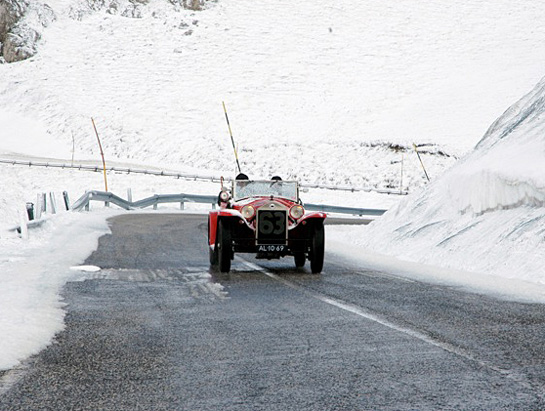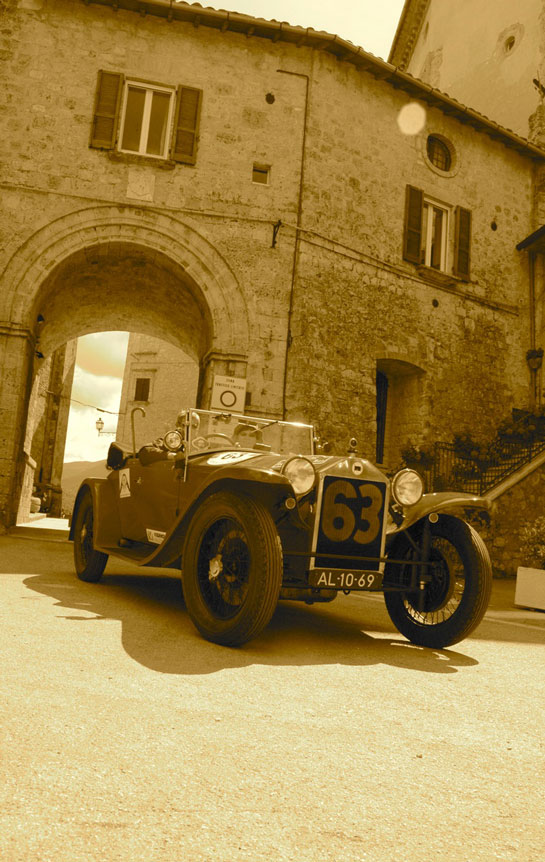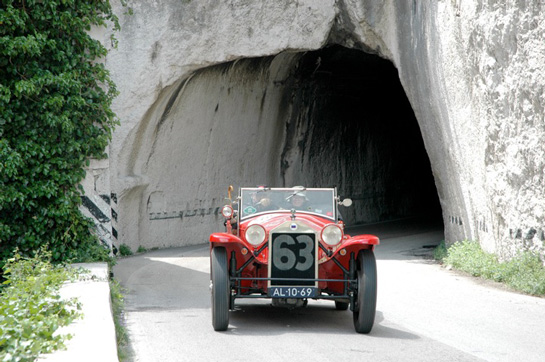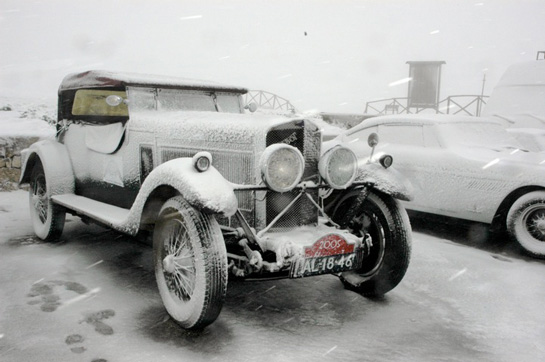By Bart Kleyn
Driving through car-loving Italy.
Why is it that Italian cars are made for small curvy roads ? Why do Italian cars want to rev ? Is it possible this has to do with the roads for which they were conceived ?
If you don’t know the answer to these questions: go to Italy. If you do know the answer, then you want to go to Italy.
After six successful years the Via Flaminia is still growing in popularity.
That is why in 2011, for the first time, there will be three editions of the Via Flaminia:
May 21-28 Pre War cars up to 1948
June 4-11 Classic cars up to 1974 BOOKED
September 17-24 Classic cars up to 1974.
The start will be on May 21st in Mantova and the finish a week later at the hill tops overlooking Rome. The second edition with only Classic cars is fully booked, leaving only the September edition for those with a car up to 1974.

The entrant says this is a 1929 Lambda 8E series with a body built by an unknown coachbuilder in Australia. Readers welcome to help.
After descending from the car-train the 30 automobiles will meet again on the central square of historic Mantova. While waiting for each other one can visit the Tazio Nuvolari Museum. The police will escort us downtown to the restaurant next to Palazzo Té and the actual start.
One of the main attractions of the Via Flaminia must be the visit to Mario Righini’s largely unknown collection of rare cars. He has stashed away 200 of the most beautiful cars of his private collection in his “Castello”. An Alfa 6C is as common in his castle as a Mini in a British collection. An OM is as special as a Ford Fiesta in London traffic.
Avoiding as much as possible the main roads Via Flaminia sets out to the Apennines. And that is where on the second day the real driving and navigating starts.
The view on the juxtaposed rolling hills is fabulous. On the east side the Adriatic sea, on the west side the mighty Corno Grande with its 2912 meters. Towards Abruzzo the presence of the Corno Grande increases, its flanks are bare; the roads go up relentlessly to arrive at one of the most astonishing sites, the high planes of the Parco Nazionale del Gran Sasso, also referred to as little Tibet. In Umbria civilization as known today, takes form. The towns hide from the blistering heat, perched high around the church on a hilltop. In Tuscany the roads are lovely, curving through freshly ploughed earth and green vegetation, the contrast could not be more eye catching.

Almost to the top the Lancia, chassis 20813 keeps on trucking. Plenty of room for cold weather clothes.
The variety of the landscape is amazing. There are a few constant factors though; the roads are made for driving. Small, uneven and with slow curves. The food, well, it is Italy, they virtually invented great dining. Then there is the friendliness and the admiration for those strange foreigners who drive 1200 (pre-war) or 1600 (classic) kilometers in a week over roads they have themselves forgotten since long. In their view we still may be Barbarians, but they have learned to deal with the fact and give thumbs up at any old car that passes by.
More information can be found on www.via-flaminia.com or you can contact Bart Kleyn at +31 6 242 343 45.


